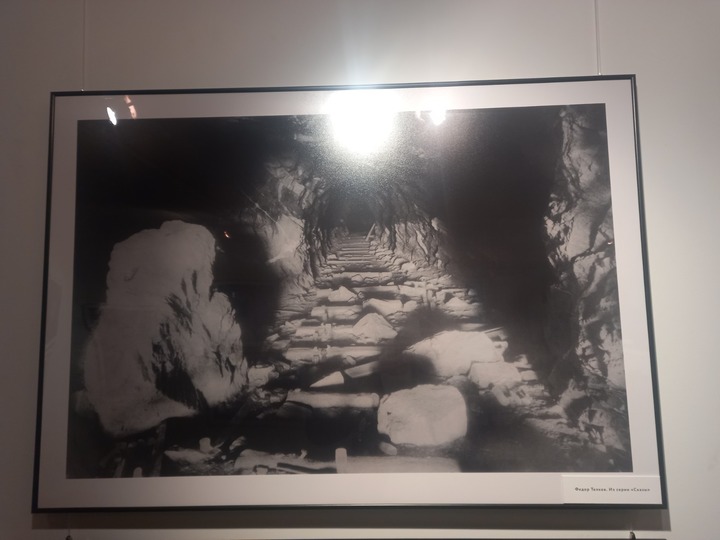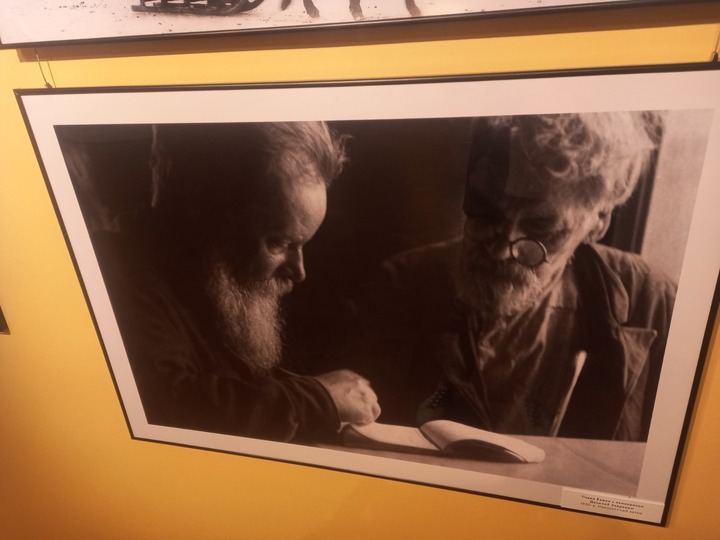Black-and-white life and colored death of the author of The Malachite Box were shown in Moscow
[ad_1]
While Moscow and St. Petersburg are challenging each other’s monopoly on Dostoevsky, and monuments to Pushkin are being demolished in Ukraine, the State Literary Museum decided to remind that Russian literature was created not only in the capitals and not even within the middle zone, where Yasnaya Polyana and Spasskoe-Lutovinovo , and Tarkhany perfectly accommodated. By August 9, Goslitmuseevtsy brought an exposition about Pavel Bazhov from Yekaterinburg, the temporary location of which was the Moscow Museum of the Silver Age. On the first day of work, the visiting version of the exhibition Ural project was visited by the MK correspondent.
The Bryusov House on Prospekt Mira, where the museum is located, is an attractive literary location in itself. A noble marble plaque on the building says that Valery Yakovlevich lived, worked creatively and died here – those who came here for the first time (if there are any left) are immediately set in the right mood. Actually, the exposition about the author of the Malachite Box is about life and death.
True, the project “Ural Bazhov. The Power of Place” on the way across the country to Moscow “lost the exhibits”. I mean, in Ulyanovsk, at the local Goncharov Museum on July 20, visitors were invited to look at “the letters, diaries and photographs of the writer, as well as his personal belongings, including his favorite sweater.” And the “supplier” of literary artifacts was the United Museum of Ural Writers. Our respected colleagues brought only artistic photographs to us (apparently, they were reprinted from archival transparencies, etc.). Perhaps the exhibition exists in several versions, but in any case, the photographic canvases placed in two halls of the mansion give a broad context to the biography of the classic and form an idea of the harsh nature and work of the inhabitants of his small homeland.
Most of the photographs, or rather all but one, are black and white. They tell about the Urals and Bazhov’s life. The only color photograph is about death: it shows a solemn farewell to Pavel Petrovich in the Sverdlovsk Philharmonic on December 9, 1950 in a Stalinist way.
Conventionally, all materials can be divided into several categories.
The historical ones include, for example, “Station in Yekaterinburg. 1900s”, “Main Avenue. 1880s”, “Gostiny Dvor”.

What the Urals were like before the revolution – that’s what these priceless shots tell about on a visual level.
And about how and under what conditions people lived and worked, they say “Kvass trade on Sennaya Square. 1900s”, “Market on Shchepnaya Square”, “Prospector’s Gathering. 1900s”, “Peasant on arable land” (although this is already the 1930s), “Portrait of a family from Sysert”, “In a shoe shop” and others.
The visual layer is only the first of several. If you “read” the signature – you can find out a little more. That’s what caught my eye. “Gostiny Dvor” in the YeKB today is the square of 1905. Sennaya – Park them. Pavlik Morozov. The main avenue, apparently – st. Lenin.
According to the historical names, the years of Soviet power went through a skating rink – only the street renamed st. Bazhov. The former Observatory at the beginning of the last century was densely littered with mud, today it is asphalted. Progress is obvious. Everything else is very sad. But, by the way, pre-revolutionary naming was done according to the St. Petersburg and Moscow model, and Pavlik Morozov is at least a local character.
I moved away from the topic – but even at the exhibition, Bazhov’s own plots do not appear immediately.
They are preceded by the already mentioned historical, industrial photos – a gold mine, a gold washing factory, a mine and a metallurgical plant. Then comes the “art house” series of the contemporary photo artist Fyodor Telkov “Tales” – it is at the junction, as it captures nature, mysterious forests, village huts with characteristic mytho-folklore details, frightening underground landscapes, where, it seems, is about to appear from the depths Great Poloz and his daughters or the Ural analogue of the underground guard – Good Shubin.
And only then comes the turn of Bazhov.
We see portraits dated to the last years of the writer’s earthly journey. Little Pavel with his parents. Young Pavel Bazhov (who taught in various institutions almost all his life) with graduates of the Diocesan Women’s School. Bazhov with his wife Valentina Alexandrovna and mother Augusta Stefanovna. With daughter Ariadne and grandson Nikita.

“Change of personnel” – or rather, of power and social formation – and socialist realities begin. Bazhov with members of the political department of the 29th Infantry Division, a writer in the editorial office of the Ural Worker, he is also with a letter as wide as a tablecloth from a reader of the Peasant Newspaper.
Other times – other readers – other literature.
And one frame is striking in its epicness. 30s. Bazhov with stone cutter Danila Zverev. Miner (specialist in the extraction of gems) Danila Kondratievich – with a wise face, like that of Mikhail Bakhtin or Nikolai Fedorov, brilliant in his closeness to the people, like a sower depicted by Ivan Shadr.
And at this moment you begin to “unravel the tangle”.
The Casket was published from 1936 to 1945. Zverev is the same Danila-master. Rhodonite, chrysolite, jasper, agate, amethyst, rock crystal and malachite migrated to the poetic space of tales “from the hands” of this man, he acted as an intermediary for the transfer of mountain treasures into exemplary literature.
Maybe poems are born “out of rubbish,” but Ural stories owe their origin to stronger minerals and rocks—and to people of a different breed. Look at the actors of the Sverdlovsk Youth Theater, which staged the main work of Bazhov on its stage in the 39th, and you will understand what I mean.
The “tactile” presence of the main character of the exhibition was not enough for me personally. The “labor” pathetic component especially caught my eye, but a personal factor worked here – my father was a miner. But if you watch “Ural Bazhov” – then only slowly. Otherwise, all these photographs simply will not reveal themselves.
[ad_2]
Source link






